University Assignment: Consumer Motivation and Diffusion Responses
VerifiedAdded on 2022/08/14
|5
|728
|17
Homework Assignment
AI Summary
This assignment presents a student's responses to two posts on consumer behavior, focusing on consumer motivation and the diffusion of innovation. The first response analyzes a post on consumer motivation, discussing how companies should target customers while maintaining ethical practices and addressing the potential for materialism. The second response evaluates a post on the diffusion of innovation, highlighting how companies like Starbucks can leverage diffusion theory to expand into new markets, such as Australia, by customizing their offerings to meet local consumer preferences. Both responses demonstrate an understanding of key marketing concepts, consumer decision-making processes, and the application of theoretical frameworks in real-world scenarios. The student references relevant academic literature to support their arguments, providing a comprehensive analysis of the topics.
1 out of 5
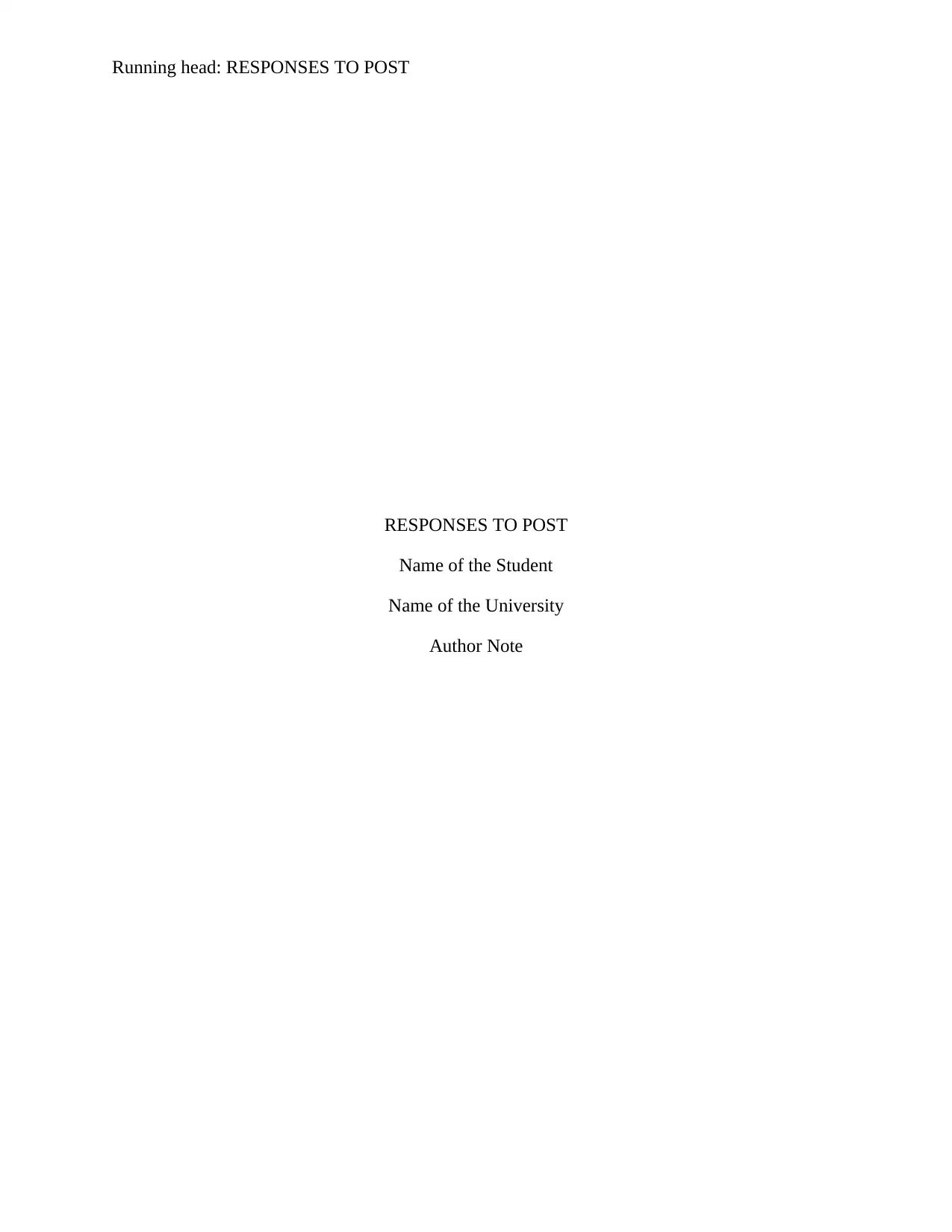
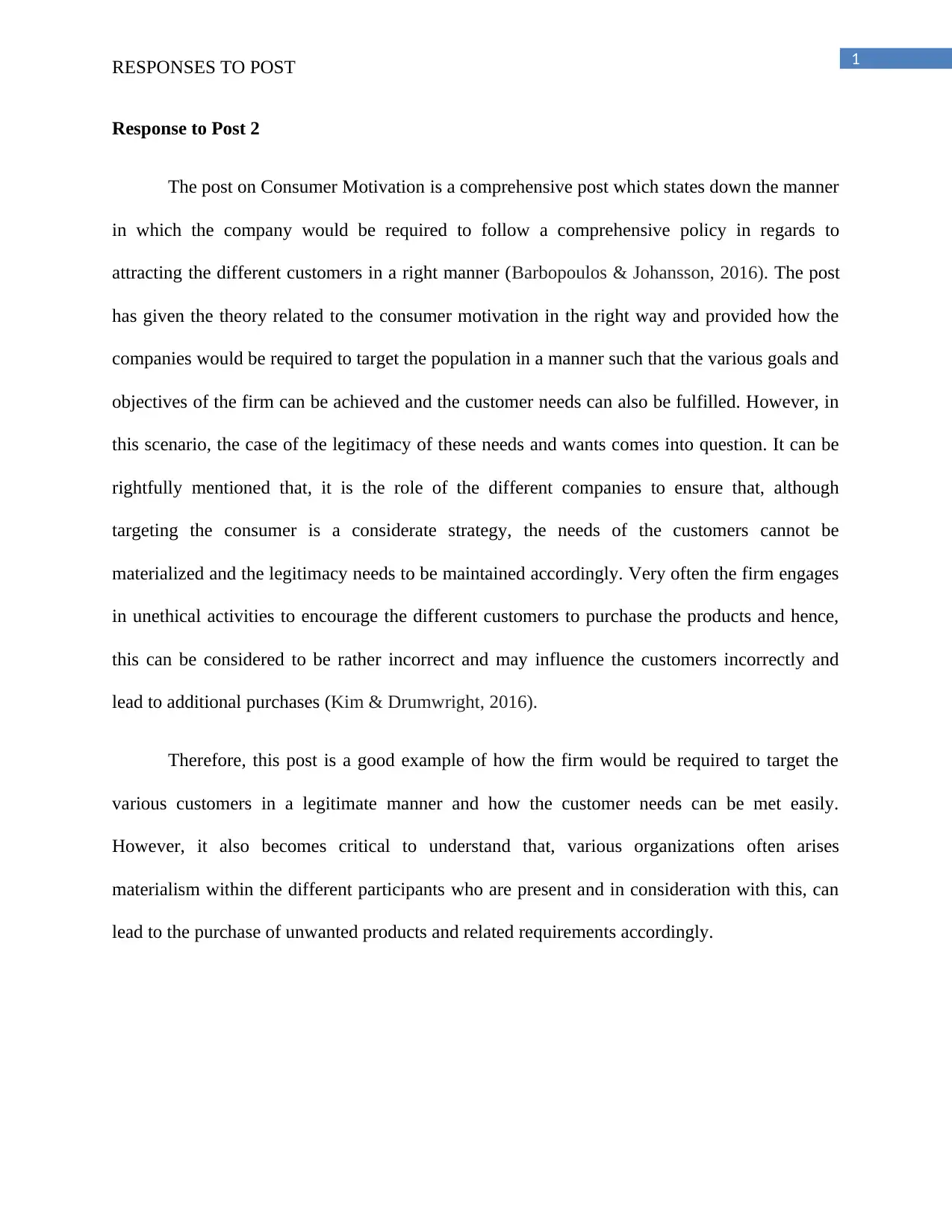
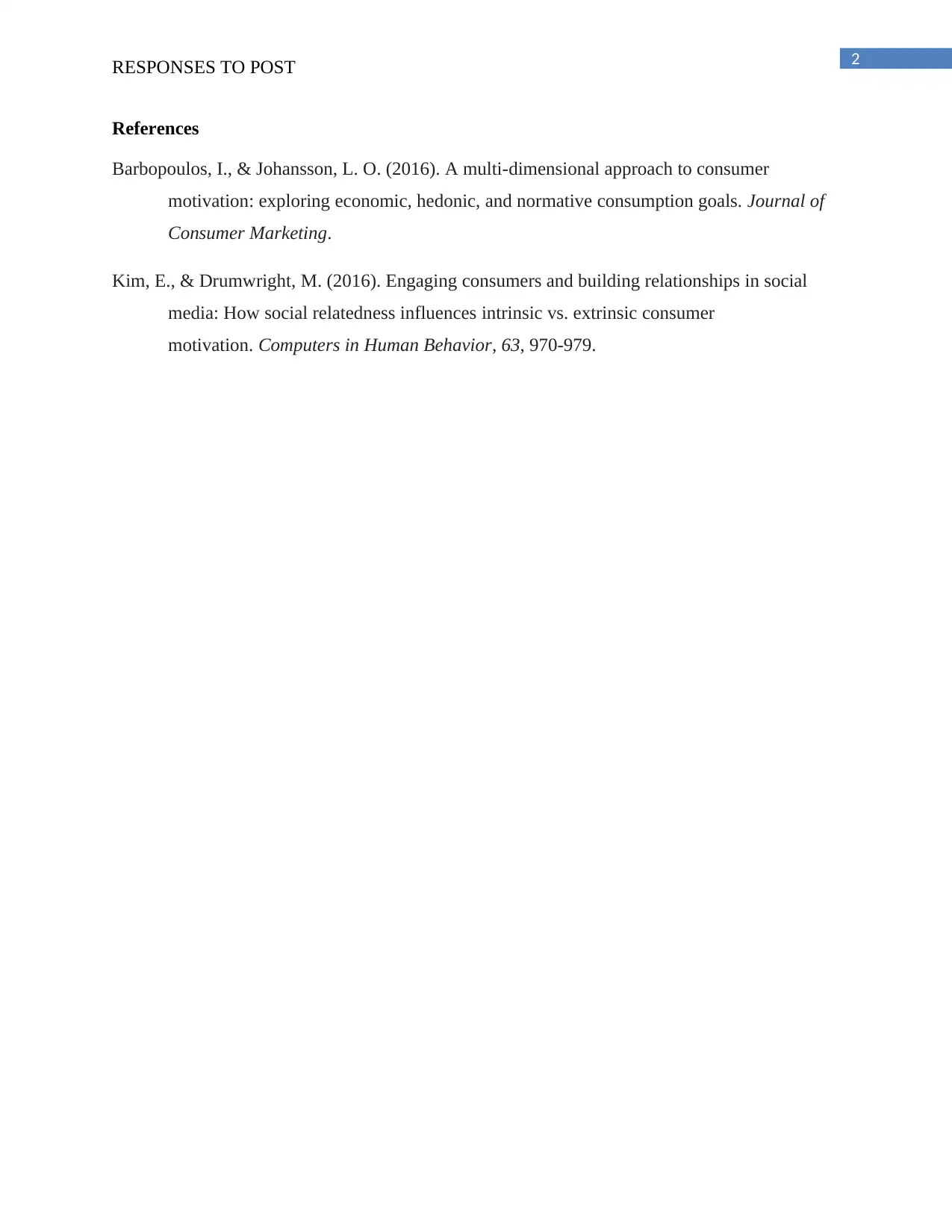

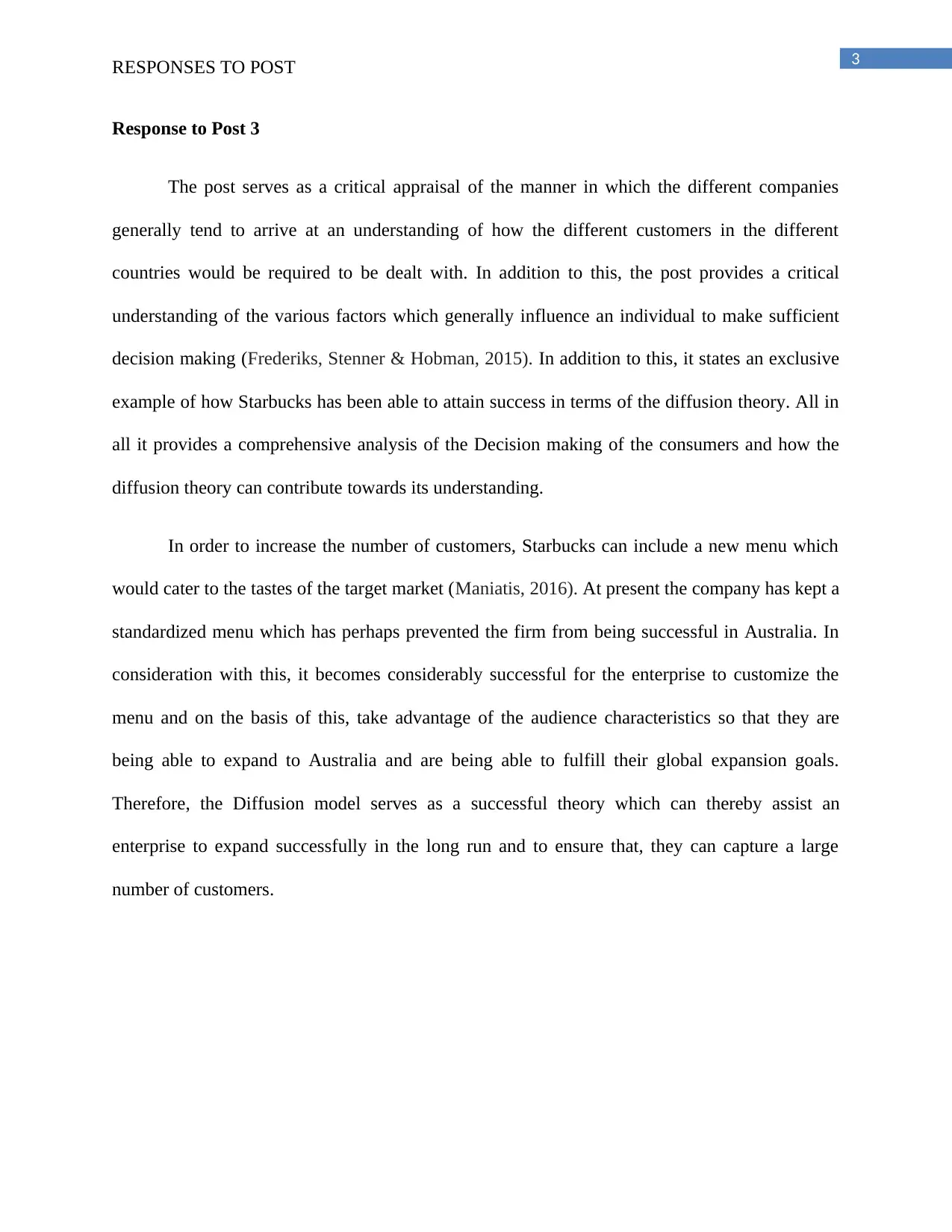
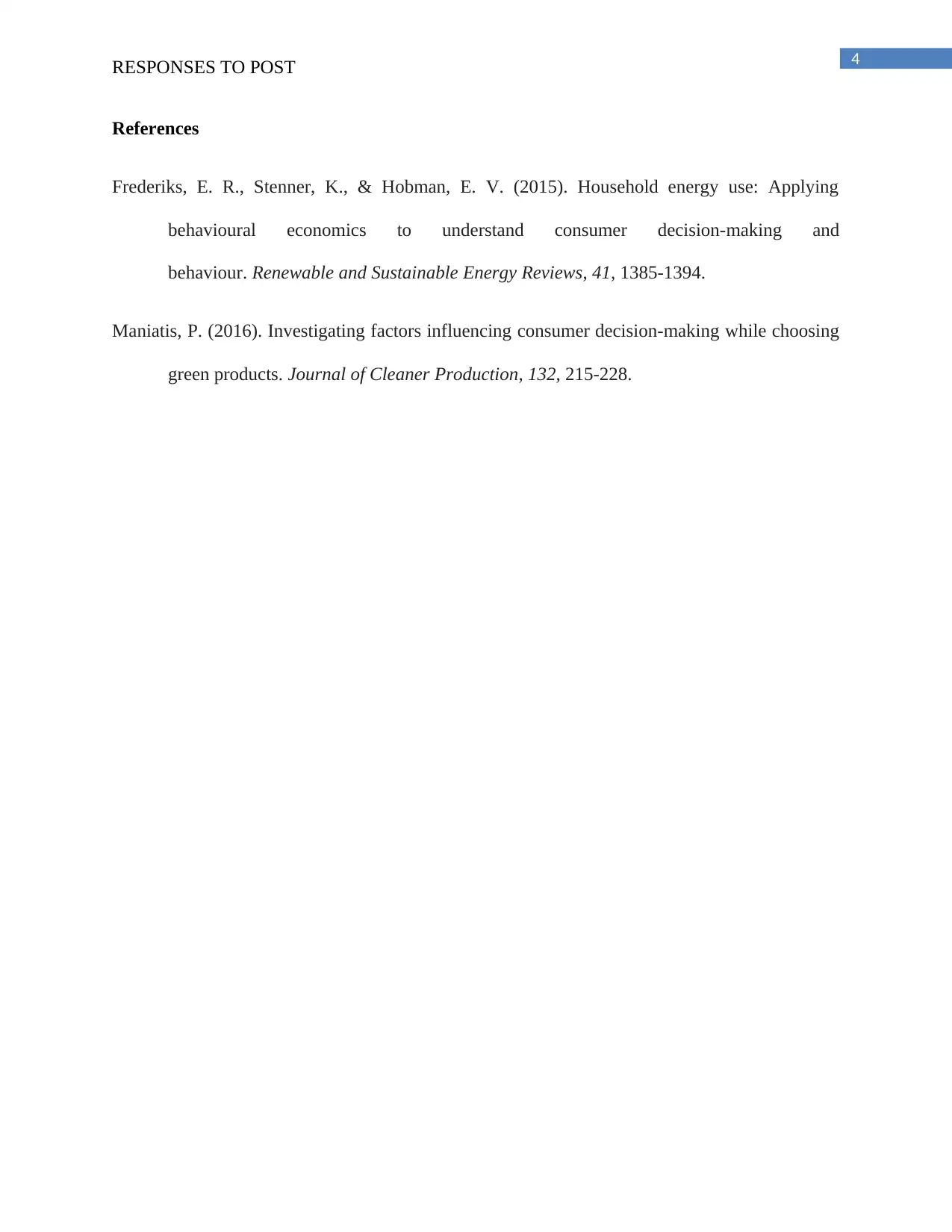






![[object Object]](/_next/static/media/star-bottom.7253800d.svg)